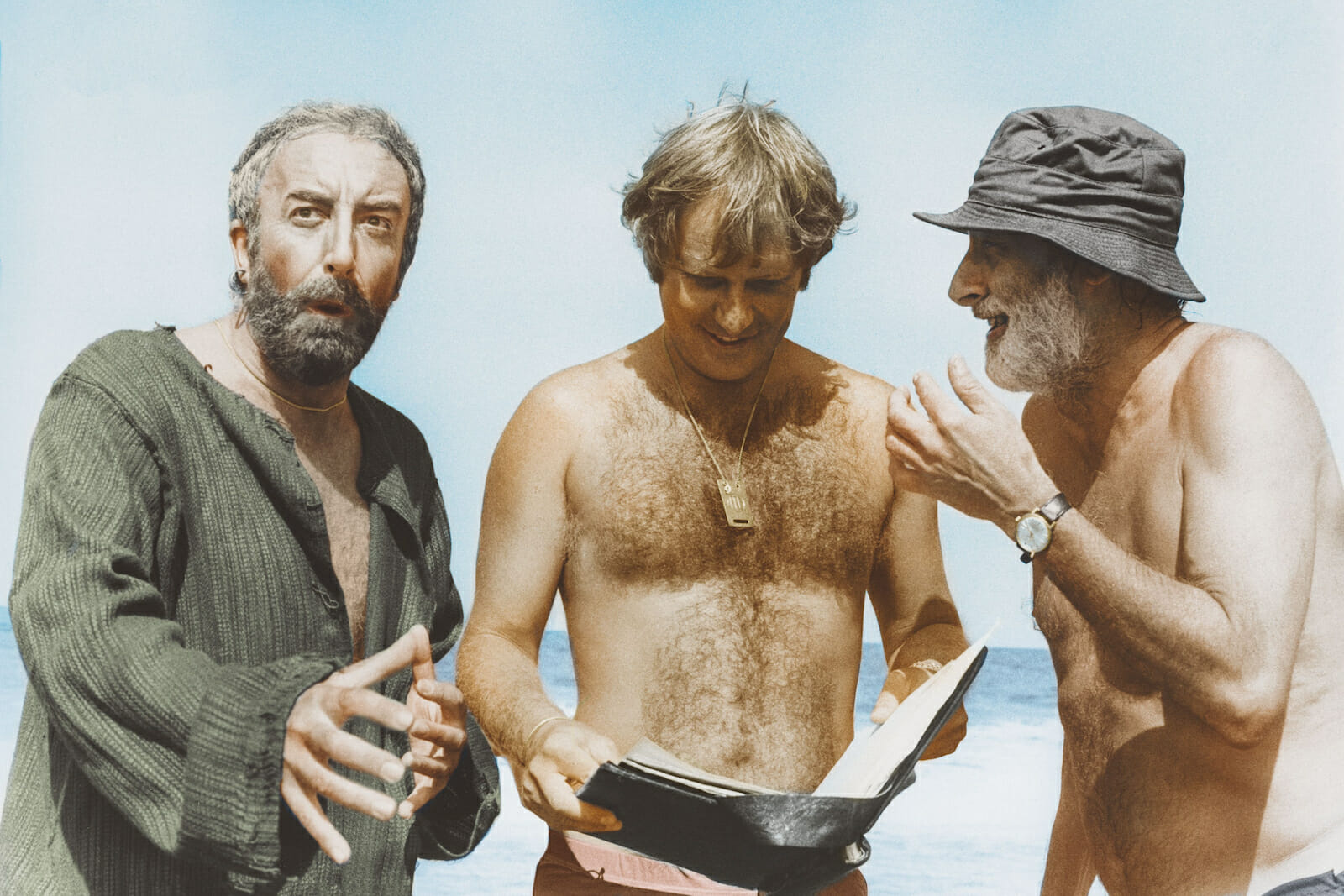
‘The Ghost Of Peter Sellers’ Review
Watching someone go through therapy – exorcising the demons of their life – is a bit uncomfortable. So while we understand Peter Medak’s ‘need’ to revisit the project (from almost 50 years ago) that nearly derailed his promising career, there are plenty of moments here where we feel like we are intruding. As a filmmaker, Mr. Medak’s most natural form of expression is with a camera, so re-tracing a dark time as a documentary makes some sense; we just wonder why he had to drag us along to share his misery in The Ghost Of Peter Sellers.
A “67 day nightmare” is how Peter Medak describes the experience of filming Ghost in the Noonday Sun, a film that was never officially released. It was 1973 and Medak was a hot young director, fresh off The Ruling Class with Peter O’Toole. When Peter Sellers, one of the most sought-after international film stars, agreed to sign on, the 17th-century pirate movie based on the novel by Albert Sydney Fleischman, was thought to be a sure-thing box office smash. In reality, it was the beginning of Medak’s nightmare, which still haunts him today.
While re-visiting the original Cyprus sets, and meeting with seemingly anyone who was involved with the production and is still alive, Medak recollects specific instances of things that went sideways. The vast majority of it leads right back to the behavior of Peter Sellers, who seemed to be sabotaging the film from very early on. Was it arrogant “star” behavior? Was Sellers depressed over his breakup with Liza Minnelli? Was he bipolar? We get interviews with co-writer (and Sellers’ buddy) Spike Milligan’s agent Norma Farnes, as well as the film’s Costume Director Ruth Myers, and Sellers’ stuntman Joe Dunne. None of these folks seem to have any pleasant memories of making the movie, and when you add in commentary from other filmmakers like director Piers Haggard (The Fiendish Plot of Dr. Fu Manchu, Sellers’ final film, 1980) and director Joseph McGrath (Casino Royale, The Magic Christian), it appears the common denominator in creating anguish was Peter Sellers.
Among the tales we hear are in regards to Sellers firing a producer, his clashes with Medak and co-star Tony Franciosa, his push to keep Spike Milligan involved as writer and director of some scenes, and most shocking of all, Sellers’ faking a heart attack on set, and the admission of collaboration in fraud from Dr. Greenburgh. We expect artists to have unusual personalities and quirks, but it’s unfortunate when one person can affect the livelihood of so many others.
“Why go through the pain of re-visiting this?” Medak is asked the question a couple of times, and it certainly runs through our head while watching. Clips from the film are dropped in throughout the documentary, and it comes across as a pirate farce that appears to have been disjointed at best. I recently watched a “lost” Sellers film entitled Mr. Topaze (aka I Like Money) from 1961. It was the only feature film where he was credited as director, and if the stories from behind-the-scenes are true, it was yet another case when Sellers was guilty of sabotage.
Medak’s mission with this documentary seems to be one of catharsis. Or maybe it’s his chance to prove he wasn’t to blame for the tragedy of this project. When he talks to producer John Heyman, it seems clear that Heyman, despite losing millions on the film, was able to move on – to get over the setback…something Medak still hasn’t done. While no cast or crew members attended the wrap party, we do wonder if anyone will have an interest in this mess that occurred nearly five decades ago. The only value may be from the perspective of cinematic history or lore, at least other than, hopefully, Peter Medak’s mental well-being and soul cleansing.
The Ghost Of Peter Sellers is available on VOD.

